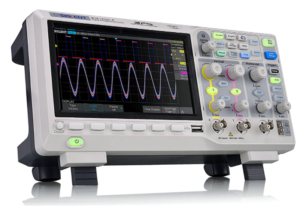In an increasingly digital world, power interruptions can be disruptive, causing data loss, hardware damage, and workflow disruptions. That’s where Uninterruptible Power Supply (UPS) comes into play. In this blog post, we’ll explore the concept and importance of UPS, explaining how it works, its benefits, and its various applications. Whether you’re a home user or a business owner, understanding UPS and its role in providing uninterrupted power can help you protect your devices and data.
Defining UPS
An Uninterruptible Power Supply (UPS) is an electrical device that provides backup power when the main power source fails or experiences fluctuations. It acts as an intermediary between the power source and the devices connected to it, ensuring a continuous and stable power supply. UPS units are equipped with batteries or capacitors that can store electrical energy and provide seamless power during outages, giving users enough time to safely shut down their devices or switch to an alternative power source.
How UPS Works
UPS systems function by continuously monitoring the incoming power supply. When a power disruption occurs, the UPS switches to its internal power source, which could be batteries, capacitors, or flywheels. This switchover happens instantaneously, preventing any interruption to the devices connected to the UPS. The stored power is then converted to the appropriate voltage and delivered to the devices, allowing them to continue operating seamlessly until the main power is restored or a backup power solution is implemented.
Types of UPS
There are different types of UPS systems available to cater to various needs:
- Standby UPS: This type provides basic protection against power interruptions, instantly switching to battery power when the main power source fails.
- Line-interactive UPS: It offers voltage regulation, protecting devices from voltage fluctuations, and seamlessly switches to battery power when needed.
- Online UPS: The most advanced type that continually powers devices from the battery source, providing the highest level of protection against power disruptions and voltage fluctuations.
Benefits of UPS
Implementing a UPS system offers several advantages, including:
- Protection from Power Outages: UPS units ensure uninterrupted power supply during outages, safeguarding your devices and preventing data loss.
- Voltage Regulation: UPS systems stabilize the voltage, protecting devices from damage caused by power surges or voltage fluctuations.
- Data Integrity: UPS units provide sufficient time to safely shut down computers and servers, minimizing the risk of data corruption or loss.
- Equipment Longevity: Consistent power supply from a UPS can extend the lifespan of electronic devices by shielding them from sudden power fluctuations or spikes.
Applications of UPS
UPS systems find applications in various settings:
- Home and Office: Protect computers, servers, routers, and other critical devices from power disruptions and voltage fluctuations.
- Data Centers: UPS units are essential to maintain uninterrupted power supply to servers, storage systems, and networking equipment.
- Healthcare Facilities: UPS systems ensure continuous power to medical equipment, preventing disruptions during critical procedures.
- Retail and Point-of-Sale (POS) Systems: UPS units safeguard transactional data and prevent loss of revenue due to power interruptions.
Selecting the Right UPS
When choosing a UPS, consider factors such as the power capacity required, the number of devices to be connected, and the runtime needed during power outages. Assess the load requirements and evaluate the UPS’s capacity to meet those needs. Additionally, consider the scalability, efficiency, and reliability of the UPS unit to ensure long-term effectiveness.
Let’s say you have a small office setup consisting of a desktop computer, a monitor, a printer, and a router. Here are the power ratings for each device:
- Desktop Computer: 500 watts
- Monitor: 100 watts
- Printer: 50 watts
- Router: 25 watts
To calculate the total power requirement, add up the power ratings of all the devices:
500 watts + 100 watts + 50 watts + 25 watts = 675 watts
In this scenario, you would need a UPS with a capacity greater than or equal to 675 watts to ensure that all your devices are adequately powered during outages.
However, it’s important to consider the efficiency and runtime as well. UPS units typically have a specified efficiency rating, such as 90%. This means that if your devices require 675 watts, the UPS would need to have a capacity higher than 675 watts to account for the power loss during the conversion process.
Additionally, consider the runtime you require during power outages. UPS systems often provide an estimated runtime based on the power load. For example, a UPS may provide 10 minutes of runtime at full load or 30 minutes at half load. Determine the runtime you need to safely shut down your devices or switch to an alternative power source.
Taking all these factors into account, you can choose a UPS with a capacity slightly higher than your calculated power requirement, ensuring that it can handle the load and provide sufficient runtime for your specific needs.
Remember to consult the manufacturer’s specifications and guidelines to select the most suitable UPS model and capacity for your unique requirements.
By carefully evaluating the power ratings, efficiency, and runtime, you can confidently select a UPS with the right capacity to protect your devices and maintain productivity during power interruptions.
Conclusion
Uninterruptible Power Supply (UPS) systems play a vital role in safeguarding devices, data, and workflows from power disruptions and voltage fluctuations. Whether you’re a home user, a small business, or operating a data center, investing in a reliable UPS solution can provide peace of mind and uninterrupted operation. Protect your devices, prevent data loss, and maintain productivity by harnessing the power of UPS technology.

